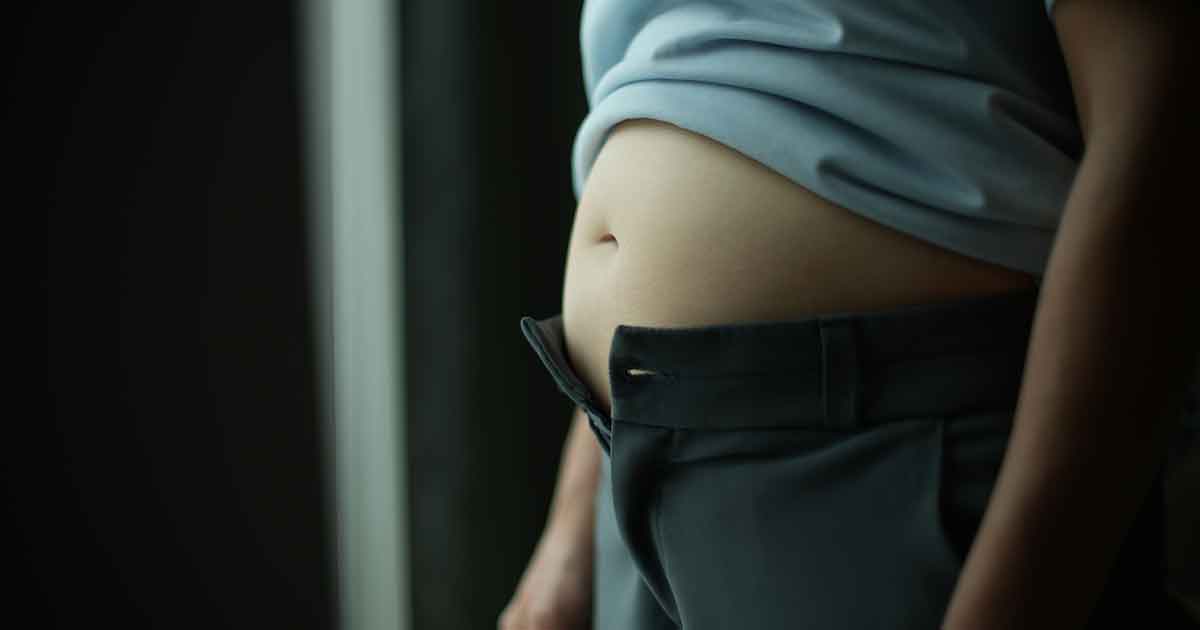True Cellular Formulas Team - February 13, 2025
The Hidden Risks of Fabuloso
Why Your Favorite Cleaner May Be Harming Your Home

Cleaning products are supposed to protect your home from bacteria, grime, and toxins, but what if the cleaner you’re using is actually introducing more harmful elements into your space? Instead of eliminating germs, some cleaners bring hidden dangers into the home, and Fabuloso is a perfect example of this. Many people love it for its strong scent and perceived cleaning power, but the truth is, Fabuloso is far from fabulous. When you break down what’s inside the bottle, it becomes clear that this popular cleaner may be doing more harm than good.
In early 2023, nearly five million bottles of Fabuloso were recalled due to bacterial contamination. This means that instead of eliminating bacteria, it was harboring a dangerous strain of antibiotic-resistant Pseudomonas bacteria. A cleaner that allows bacteria to thrive is bad enough, but the risks become even greater when you also consider its synthetic fragrances, preservatives, and petroleum-based surfactants. This product is more of a chemical cocktail than a true cleaner, and the last thing you want is to introduce these toxins into your home.[1]
The Fabuloso Recall: How Five Million Bottles Were Contaminated With Bacteria
In a shocking revelation, Colgate-Palmolive, the parent company of Fabuloso, issued a massive recall in early 2023, pulling nearly five million bottles off store shelves. The reason? This widely used cleaner was contaminated with Pseudomonas bacteria, a dangerous pathogen known for being highly adaptable and antibiotic-resistant.[2]
This type of bacteria can cause severe infections, especially in people with compromised immune systems, respiratory conditions, or open wounds. Instead of killing bacteria, Fabuloso introduced harmful microbes into people’s homes through the very product they trusted to sanitize their spaces.
Pseudomonas bacteria are particularly concerning because they can enter the body through multiple pathways, including:
- Inhalation leads to respiratory infections and lung inflammation.
- Skin contact, especially if there are cuts or abrasions.
- Eye exposure, which can cause infections and irritation.
Once inside the body, Pseudomonas can lead to serious health issues, including pneumonia, skin infections, and urinary tract infections.
Why Fabuloso Fails as a True Cleaning Product
Even without the contamination issue, Fabuloso contains a variety of questionable ingredients that make it a poor choice for a non-toxic home. Many conventional cleaning products prioritize strong scents over true cleaning power, using artificial fragrances to create the illusion of cleanliness. Fabuloso is a prime example of this deception.
Here’s why this cleaner is more of a health hazard than a hygiene tool.
- Fragrances that mask rather than clean. The overpowering smell of Fabuloso is not a sign of cleanliness. It’s a mix of synthetic fragrances designed to linger in the air and on surfaces, giving the false impression of sanitation.
- Toxic preservatives. The formula contains benzisothiazolinone and methylisothiazolinone, two preservatives that are known to cause skin irritation and respiratory issues.
- Petroleum-based surfactants. These ingredients are designed to break down grease and dirt, but they also introduce petroleum-derived chemicals into the home. These compounds can be absorbed through the skin and inhaled, adding to the body’s toxic burden.
- Artificial dyes. Fabuloso’s bright colors may make it look appealing, but synthetic dyes often contain heavy metals and other contaminants that can be harmful, especially for children and pets.
Instead of eliminating bacteria and promoting a truly clean home, this product contributes to indoor air pollution, leaves behind toxic residues, and exposes users to unnecessary chemicals.
The Problem With Cleaning Products That “Clean With Scent”
Fabuloso is marketed with the tagline “cleans with scent,” a phrase that sounds reassuring but is actually misleading. The idea that a strong fragrance equals cleanliness is one of the biggest marketing tricks in the cleaning industry.
A fresh scent does not mean a surface is free from bacteria or grime. Many conventional cleaners rely on artificial fragrances to create a sensory illusion of freshness when in reality, they do little to actually sanitize or remove harmful contaminants.
The synthetic fragrances in Fabuloso are made up of undisclosed chemical blends, many of which include phthalates, a group of endocrine-disrupting compounds that interfere with hormone regulation. These chemicals have been linked to:
- Reproductive health issues.
- Developmental problems in children.
- Increased risk of metabolic disorders.
- Respiratory irritation and allergic reactions.
People who are sensitive to synthetic fragrances often experience headaches, dizziness, and even nausea when exposed to these products. Over time, constant exposure to artificial fragrances contributes to indoor air pollution, which can lead to long-term health consequences.
Natural Alternatives That Actually Work
The good news is that you don’t need a synthetic chemical cleaner to keep your home truly clean. Natural ingredients are often more effective at removing bacteria, breaking down grease, and eliminating odors without introducing toxins into the air.
Here are some of the best alternatives to Fabuloso.
- White vinegar. A natural disinfectant that effectively kills bacteria, removes odors, and cuts through grease without toxic residues.[3]
- Baking soda. A powerful abrasive that scrubs away grime and neutralizes odors, making it an ideal all-purpose cleaner.
- Castile soap. A plant-based soap that safely breaks down dirt and grease without synthetic detergents or preservatives.
- Hydrogen peroxide. A natural alternative to bleach that kills germs, brightens surfaces, and removes stains without harsh fumes.[4]
- Essential oils. Lemon, tea tree, and eucalyptus oils have natural antibacterial and antiviral properties, making them great additions to homemade cleaning solutions.[5]
These natural alternatives provide the deep cleaning power that conventional products claim to offer without the risks associated with synthetic chemicals and bacterial contamination.
Why Switching to Non-Toxic Cleaners Matters for Your Health
For families with children, elderly individuals, or anyone with respiratory conditions, switching to non-toxic cleaners is one of the easiest and most impactful ways to improve indoor air quality. Children and pets are particularly vulnerable to synthetic chemicals because they spend more time on the floor where residues accumulate. Their developing bodies also absorb toxins more easily, making it crucial to eliminate harmful cleaning products from the home.
People with asthma, allergies, or autoimmune conditions may also experience worsening symptoms from exposure to conventional cleaners. The artificial fragrances and preservatives in products like Fabuloso can trigger respiratory distress, skin irritation, and headaches. Long-term exposure to endocrine-disrupting chemicals has also been linked to fertility issues, thyroid imbalances, and chronic inflammation.
By switching to natural alternatives, you create a home environment that is not only cleaner but also safer for everyone in the household.
Final Thoughts
Fabuloso has built its reputation on strong scents and colorful marketing, but behind the branding lies a mix of toxic chemicals, artificial fragrances, and a history of bacterial contamination. The 2023 recall of nearly five million bottles exposed a fundamental flaw in its formulation—rather than killing bacteria, it was actually harboring harmful pathogens.
Instead of relying on chemical-laden cleaners that mask odors rather than eliminate germs, consider switching to natural alternatives like vinegar, baking soda, castile soap, and hydrogen peroxide. These options provide effective cleaning power without exposing your home to synthetic toxins.
A clean home is not just about appearance—it’s about the safety and health of those who live in it. Eliminating conventional cleaners and replacing them with non-toxic alternatives is a simple but powerful way to reduce your daily exposure to harmful chemicals.
If you know someone who still uses Fabuloso or similar chemical cleaners, share this information with them. Many people unknowingly introduce toxins into their homes in the name of cleanliness, but with the right knowledge, it’s easy to make healthier choices that truly support a clean, safe, and non-toxic living environment.
- Valinsky, Jordan. “About 5 Million Bottles of Fabuloso Recalled Because of Bacterial Contamination | CNN Business.” CNN, 9 Feb. 2023, https://www.cnn.com/2023/02/09/business/fabuloso-cleaner-recall/index.html.
- Colgate-Palmolive Recalls Fabuloso Multi-Purpose Cleaners Due to Risk of Exposure to Bacteria.https://www.cpsc.gov/Recalls/2023/Colgate-Palmolive-Recalls-Fabuloso-Multi-Purpose-Cleaners-Due-to-Risk-of-Exposure-to-Bacteria
- Zinn, Marc-Kevin, and Dirk Bockmühl. “Did Granny Know Best? Evaluating the Antibacterial, Antifungal and Antiviral Efficacy of Acetic Acid for Home Care Procedures.” BMC Microbiology, vol. 20, Aug. 2020, p. 265.
- Nelson, Allison L., and Lauren Porter. “Hydrogen Peroxide Toxicity.” StatPearls, StatPearls Publishing, 2025.
- Wińska, Katarzyna, et al. “Essential Oils as Antimicrobial Agents—Myth or Real Alternative?” Molecules, vol. 24, no. 11, June 2019, p. 2130.



